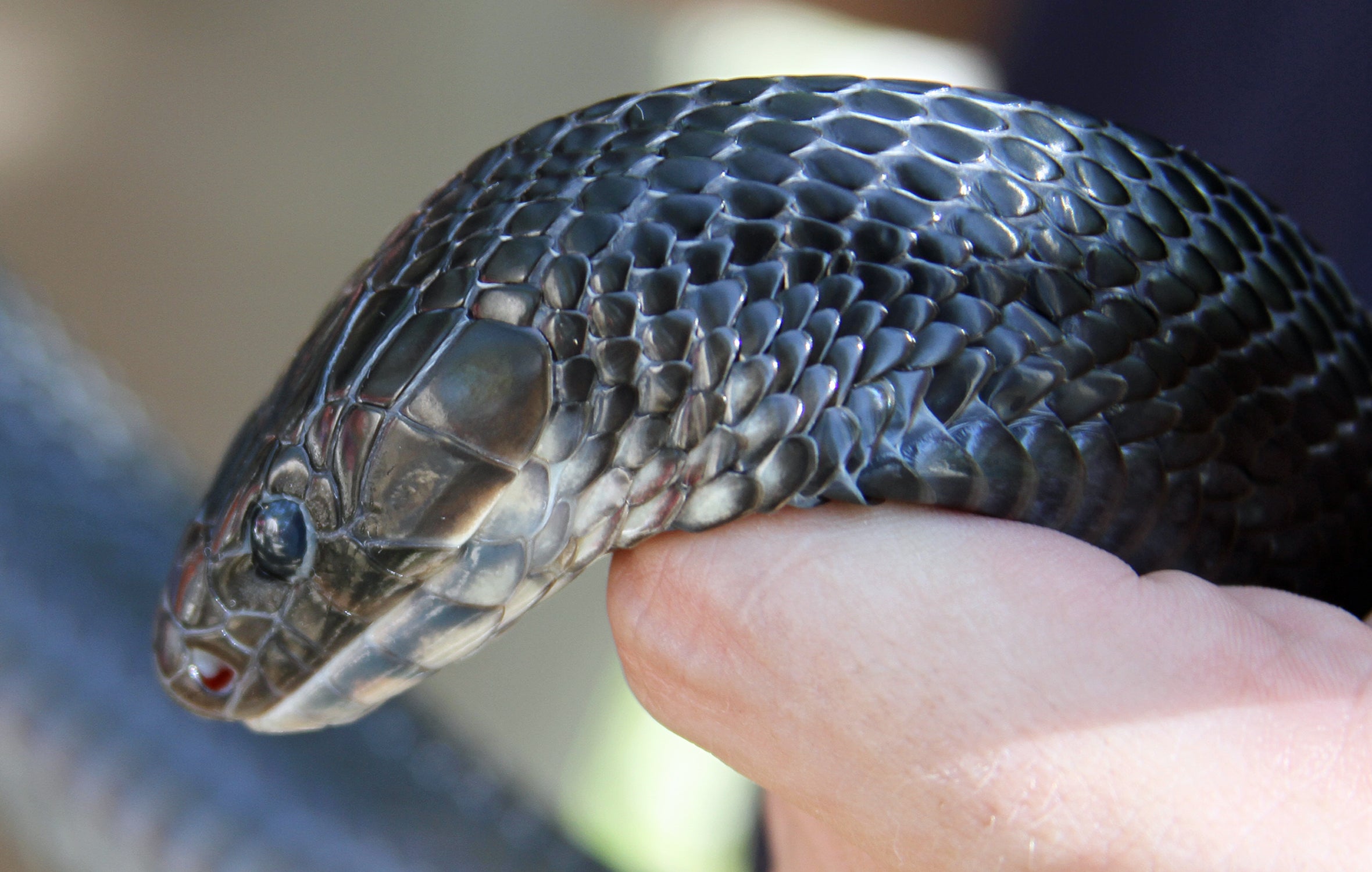By DAVID RAINER, Alabama Department of Conservation and Natural Resources
Jim Godwin crouched next to a patch of white sand in the Conecuh National Forest last week and gently released a dark, 6-foot-long serpent. The threatened eastern indigo snake didn’t hesitate to slither quickly into the intended target, a gopher tortoise burrow.
The head of the eastern indigo snake, with its tongue testing the muggy July air, made a brief appearance at the burrow’s entrance, but there was too much hubbub going on in the longleaf pine forest for it to pose for photos. No encore. Elvis has left the building.
The hubbub was created by efforts to reestablish a viable population of the snakes that once were abundant before the longleaf pine became a prime species for lumber production. More than two dozen people, including wildlife and forestry professionals as well as interested citizens and their children, joined the project leaders to release the snakes.
Godwin, of Auburn University’s Alabama Natural Heritage Program, has spearheaded the project for the past 11 years, and last week’s release of 26 eastern indigo snakes increased the number of released snakes significantly.
Through a grant from the Alabama Department of Conservation and Natural Resources’ Wildlife and Freshwater Fisheries (WFF) Division, the program had previously released 107 eastern indigos into the wild, according to WFF Grant Coordinator Traci Wood.
“This project is an example of great accomplishments for the eastern indigo snakes and all the partners involved,” Wood said. “It’s a great effort toward the recovery plan to enhance and maintain a population in the historical range of the eastern indigo. This species was extirpated from the state and hadn’t been seen since the 1950s. It is considered an apex predator. It plays an important role in the ecosystem, specifically the longleaf pine ecosystem. I think this is an exceptional example of the reintroduction of an imperiled species.
“This project is not only about the propagation and release of these snakes in the forest; we are also monitoring these snakes. PIT (passive integrated transponder) tags were inserted into the snakes. We will have technicians walking areas where snakes were released to look at survival, abundance and demographics.”
Eastern indigo snakes are the longest snakes native to the U.S. at more than 8 feet long. They prey on a variety of small mammals, amphibians, lizards and numerous species of venomous snakes. The venomous copperhead snake is a common meal for the indigo. Godwin said indigos will range far and wide during the warmer months and then seek refuge in the gopher tortoise burrows during the winter.
Wood said the WFF’s State Wildlife Action Plan identifies 366 species that are in the category of greatest conservation need.
“Alabama is one of the most diverse states in the nation, specifically Conecuh National Forest, in terms of amphibians and reptiles,” she said. “This area is the most biologically rich public land in the country.”








